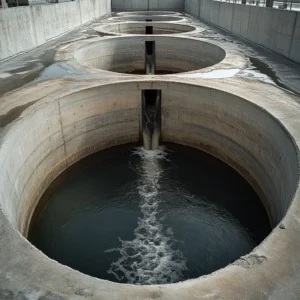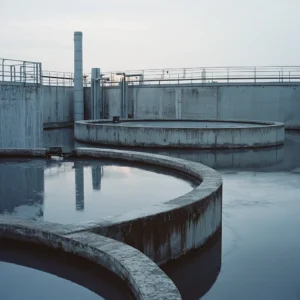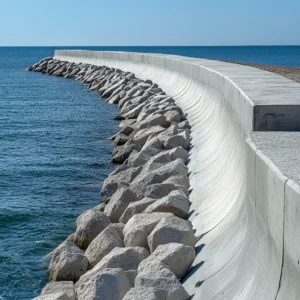Environmental Engineering
Introduction to Fiber-Reinforced Concrete in Environmental Engineering
Fiberego’s innovative use of fibers such as polypropylene, polyester, steel, and cellulose in concrete provides essential benefits to environmental engineering structures, enhancing their durability, resilience, and environmental compliance.


Fiber Applications in Water Treatment Facilities
Structures in Wastewater Treatment Plants
- Reaction Tanks, Sedimentation Tanks, and Filtration Pools: Fibers improve the crack resistance and structural integrity necessary to withstand the harsh chemical environments and mechanical stresses of wastewater treatment processes.
Drinking Water Treatment Facilities
- Clearwater Reservoirs and Filtration Buildings: Fiber-reinforced concrete ensures these critical structures are impermeable and durable, safeguarding the purity and availability of drinking water.
Fiber Applications in Solid Waste Management Facilities
Landfill Structures
- Base and Liner Systems: Polyester and polypropylene fibers enhance the mechanical properties of liners, preventing leaks and contamination of the surrounding soil and groundwater.
- Retaining Walls and Slope Protection: Steel and cellulose fibers increase the load-bearing capacity and erosion resistance, essential for maintaining the stability of landfill sites.
Incineration Plant Structures
- Incinerator Foundations and Flue Gas Treatment Facilities: The high-temperature environments require fibers that can withstand extreme conditions, reducing maintenance and prolonging facility lifespan.
Fiber Applications in Pollution Site Remediation and Protection
Soil and Groundwater Remediation Facilities
- Permeable Reactive Barriers and Containment Walls: Fibers add structural strength and chemical resistance, crucial for containing and treating contaminated sites effectively.
Coastal Protection and Erosion Control Facilities
- Breakwaters and Seawalls: The robustness provided by fiber-reinforced concrete ensures these structures withstand aggressive marine environments, protecting shorelines and reducing erosion.
Economic and Environmental Impact of Fiber-Reinforced Concrete
Cost-Effectiveness
Fiber-reinforced concrete offers long-term savings through reduced maintenance and repair costs, making it an economically viable option for environmental projects.
Sustainability Benefits
The inclusion of recyclable fibers like cellulose and the durability enhancement from synthetic fibers contribute to the environmental sustainability of construction projects, reducing waste and resource consumption.


Future Directions in Fiber-Reinforced Concrete for Environmental Engineering
Technological Innovations
Ongoing research into new fiber materials and composites promises to further enhance the performance and environmental compatibility of fiber-reinforced concrete.
Regulatory and Standard Development
As building and environmental regulations evolve, fiber-reinforced concrete stands at the forefront, offering solutions that meet stringent environmental and safety standards.
Conclusion: Fiberego’s Vision for Environmental Engineering
With a commitment to innovation and sustainability, Fiberego continues to lead in the development of fiber-reinforced concrete solutions that address the complex challenges of environmental engineering, paving the way for more resilient and sustainable infrastructure worldwide.




